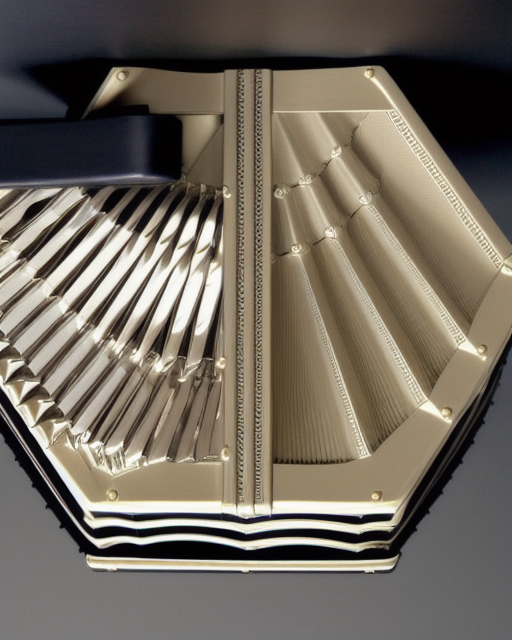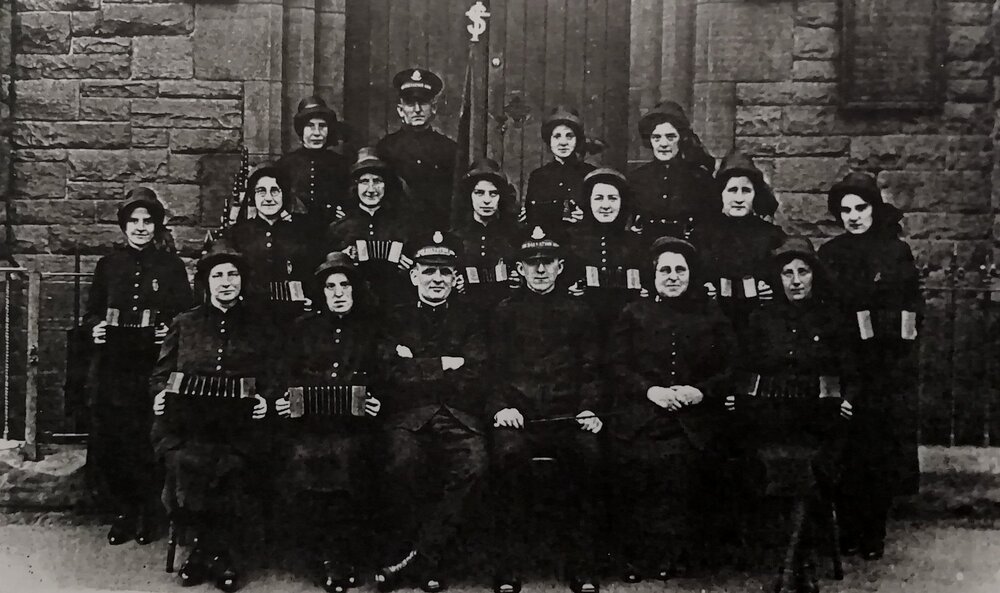-
Posts
58 -
Joined
-
Last visited
Everything posted by aeolina
-
Yes of course. It was Norman who introduced me to you.
-
I am sorry to have to pass on the sad news that the outstanding player of Scottish music on English concertina has recently passed away. Norman did much to explore and demonstrate the potential of the instrument for the playing of music from the Scottish piping traditions. He was known to many as a member of the band Jock Tamson's Bairns. There is information on him here: https://raretunes.org/norman-chalmers/ and more will follow in due course.
-
Sad news.
-
Stewart Kelly plays Regondi! https://www.scottishmusiccentre.com/stewart-kelly
-
Stewart Kelly plays Regondi! https://www.scottishmusiccentre.com/stewart-kelly
-

Amboyna Edeophone #60000, said to have been made for Grock
aeolina replied to Stephen Chambers's topic in Concertina History
Stephen Here is the portrait from the book, early 1930s. A few of the elderly concertina players I recorded in Glasgow in the 1980s had find memories of him performing there. I am pleased to note he refers to his Glasgow concerts in his autobiography. I can send the book after I receive an address. Stuart -

Amboyna Edeophone #60000, said to have been made for Grock
aeolina replied to Stephen Chambers's topic in Concertina History
Stephen I have a biography of Grock which has a photograph of him playing. I can't check it until home next week. I'll gladly pass it to you for your collection if you would like it. Best wishes Stuart -
Some of these challenges/issues are behind the practical developments in English Concertina design by Henrik Muller (for Irish) and Paul Connolly (for Scottish) and in my Caledonian Concertina (for Scottish). The developments for playing Scottish traditional music also have considerable potential for enhanced playing of ITM, subject to taste of course.
-
English system.
-
I plan to sell a 30 note Mayfair to help finance the construction of a new Caledonian model. Fashionable grey mother-of-toilet-seat (that matches our new kitchen perfectly!). Plays well and in concert pitch but one button sticking - possibly a simple fix but I'd rather leave that to the new owner. In original case and with original Wheatstone literature. Open to offers - as a guide, note several recent sales on UK sites were concluded at £450 (try a Google search). Images or sound samples available. Donation to concertina.net if concluded. Stuart
-

Looking For A Specific Concertina Cartoon
aeolina replied to gcoover's topic in General Concertina Discussion
My thesis chapter on the concertina as an instrument of sacred music covers this. -

Jack Easy (Joseph Maley), Concertinist. 1901-1980
aeolina replied to Geoffrey Crabb's topic in Concertina History
Jack was a fine Glasgow musician associated with the famous Logan family of performers. https://raretunes.org/jack-easy/ -
I asked my AI programme for a few paragraphs on the concertina and it's history. Results: 1. The concertina, a small hand-held musical instrument, was first invented in the early 19th century. It quickly gained popularity in Europe and America, particularly in folk music. The instrument was favored by many notable musicians, including John Kirkpatrick and Alistair Anderson, who helped to popularize it in the 20th century. Today, the concertina continues to be played by musicians around the world, and its unique sound remains a beloved part of many musical traditions. Written with ParagraphAI. 2. The concertina has been a popular instrument in Scotland since the mid-19th century. It is often played in traditional Scottish music, particularly in the Scottish dance music genre. The instrument is typically played by skilled musicians who have undergone extensive training and practice. The concertina is known for its unique sound, which is characterized by a rich, full-bodied tone that is both expressive and dynamic. Many of Scotland's most famous musicians have been concertina players, including the late great Angus MacKinnon. Today, the concertina remains an important part of Scotland's musical heritage and continues to be played by musicians of all ages and skill levels. Written with ParagraphAI. 3. The English, Anglo and Duet concertinas differ in several ways. The English concertina has a wider range of notes and a more complex fingering system, making it suitable for classical music. The Anglo concertina has a diatonic scale and is commonly used in traditional Irish and English folk music. The Duet concertina has a chromatic scale and allows for more complex harmonies, making it popular in classical and jazz music. Each concertina has its own unique sound and playing style, making them suitable for different genres of music. Written with ParagraphAI.
-

Concertina Designs generated by AI
aeolina replied to aeolina's topic in Instrument Construction & Repair
-

Concertina Designs generated by AI
aeolina replied to aeolina's topic in Instrument Construction & Repair
I'm working on that!! -
Huge, if true!!
-

Concertina Designs generated by AI
aeolina replied to aeolina's topic in Instrument Construction & Repair
-

Concertina Designs generated by AI
aeolina replied to aeolina's topic in Instrument Construction & Repair
-
Four new "Wheatstone Concertina" design concepts generated by AI. Needs some work on the fingerboard layouts! Stuart
-
https://soundyngs.wp.st-andrews.ac.uk/2023/research-profile-stuart-eydmann-on-the-concertina-in-scotland/
-
Rona I hope these suit. I can provide better quality copies in due course. I corresponded with a former band member back in the 1980s and that is probably where the postcard photo came from. The other is from a SA journal, I think. Dr Stuart Eydmann Edinburgh
-

Binaural Recording of Concertina
aeolina replied to aeolina's topic in General Concertina Discussion
This essay, published online with examples, is a good introduction to the practical aspects of binaural recording and relevant here: 'Creating Immersive Listening Experiences with Binaural Recording Techniques' by Shane Hoose. Published online: 3 March 2015 http://dx.doi.org/10.18177/sym.2015.55.mbi.10863 PDF: https://www.jstor.org/stable/26574394 -

Binaural Recording of Concertina
aeolina replied to aeolina's topic in General Concertina Discussion
Stephen Thanks for your interest in this. Yes, the Haddo House concert featured a suite based on the music composed for the late 1970s BBC radio production of the Scottish Play. This piece featured in our 1981 album for Claddagh Records of Dublin. Neither the album nor the Haddo concert were recorded binaurally. I am now inspired to record it that way next time it is performed in a decent hall and will post the results. -

Binaural Recording of Concertina
aeolina replied to aeolina's topic in General Concertina Discussion
I found this in a Google search. Not sure what is happening here other than two traditional stereo recording set ups. https://www.facebook.com/NotifyBand/photos/a.431984730240718/1316869208418928/?type=3














